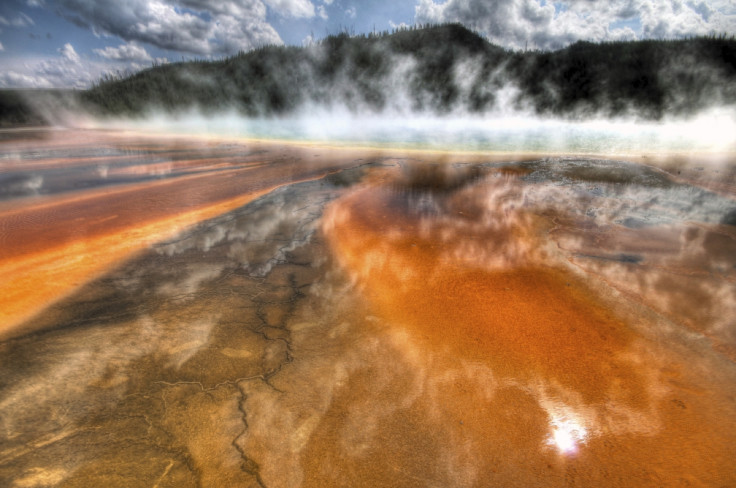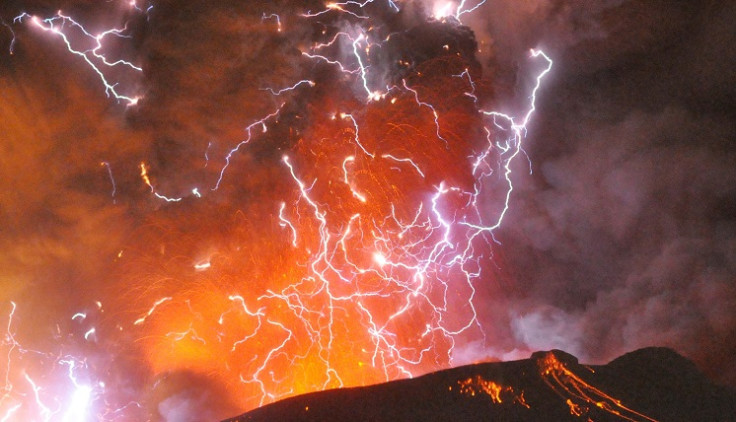Supervolcanoes destroy all in their path: Evacuation before eruption 'only way to stay safe'

Supervolcanoes destroy everything in their path through dense flowing rivers of hot ash and gas, not fast-moving sandstorm-style flows, researchers have said. By studying past eruptions at supervolcanoes, the team hopes to establish how future events – such as could happen at Yellowstone and Italy's Campanian Volcanic Plain – would happen and plan emergency responses accordingly.
A team of researchers from the United States Geological Survey, the University at Buffalo and the Blaise Pascal University in France sudied the Silver Creek caldera to work out how the supervolcano would have erupted 18.8million years ago. The now-extinct volcano, located on the intersection between California, Nevada and Arizona, flooded parts of all three states with pyroclastic flows of hot ash and gas. These rivers travelled more than 100miles and would have destroyed everything in sight.
How they reached such a distance would depend on the type of eruption, with two scenarios being most plausible. One would suggest to cover such a long distance, the flows would have to be very turbulent, hot and fast moving storms of gas. The other option is that they are dense and fluid-like, moving slower for a sustained period of time.
Published in Nature Communications, the team combined field data from the 1980s with laboratory experiments simulating the behaviour of pyroclastic flows to work out the speed and density of the eruption (known as the Peach Spring super eruption).

The field data included information on rocks that had been lifted and moved during the eruption. Many of these were far too large to have been moved by a sandstorm-like flows, meaning they had more likely been shifted by denser pyroclastic flows.
In the laboratory experiments the team looked at what would happen when a mixture resembling a dense pyroclastic flow moved across a generated terrain. With this, they were able to better understand the relationship between the velocity of the flow and how much weight it was able to lift and carry.
Findings indicate that the pyroclastic flows from the ancient super-eruption would have had to have been travelling between 10 and 45 miles per hour to pick up the rocks it did. Any faster and it would have shifted even heavier boulders that were unmoved.
The findings have the potential to help disaster preparedness efforts in the event of an impending eruption at one of the world's active supervolcanoes, the researchers said. Rock deposits around other supervolcanoes resemble those found at Silver Creek, so could have produced similar eruptions in the past (and may again in the future).

Greg A Valentine, one of the study authors, told IBTimes UK: "Many supervolcanoes behave in a similar way, by pouring out huge volumes of gas and ash that make dense ground-hugging pyroclastic flows which travel tens to more than 100km from the source caldera (as did the Peach Spring Tuff's pyroclastic flows, which came from the Silver Creek caldera). All supervolcanoes produce large volume pyroclastic flows, and many, possibly most will behave like the Silver Creek example, but others might involve some different processes."
And while the slower more sustained pyroclastic flows may appear less destructive than the other option, this is not the case, he said. "These pyroclastic flows are slower, but not that slow! They are also dense. It's the combination of density and speed, more so than the speed by itself, that causes damage potential. Also, they would have temperatures of several hundred degrees Centigrade. Finally, they bury everything in their path.
"The flows, even though not very fast, still destroy everything in their path. The only way to be safe is for people to be away from the flow area before one happens."
Valentine now plans to look on the initiation of pyroclastic flows, looking at how they form. "These supervolcano eruptions discharge huge volumes of gas and ash upward into the atmosphere, but the mixture is denser than air so it falls back to the ground, like a fountain. Once it falls back to the ground, it forms pyroclastic flows. The transition from falling to flowing is a critical one that we don't know much about, but it probably determines they type of pyroclastic flow."
© Copyright IBTimes 2025. All rights reserved.






















